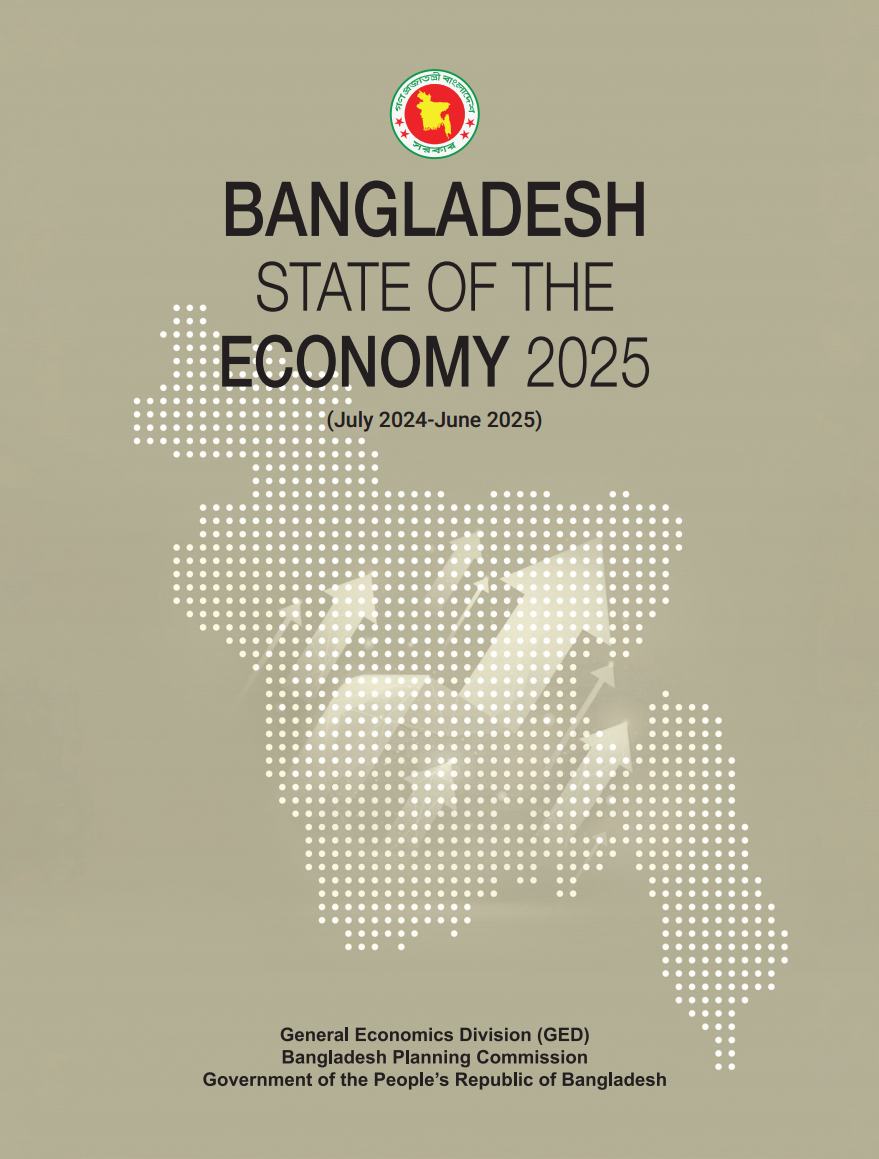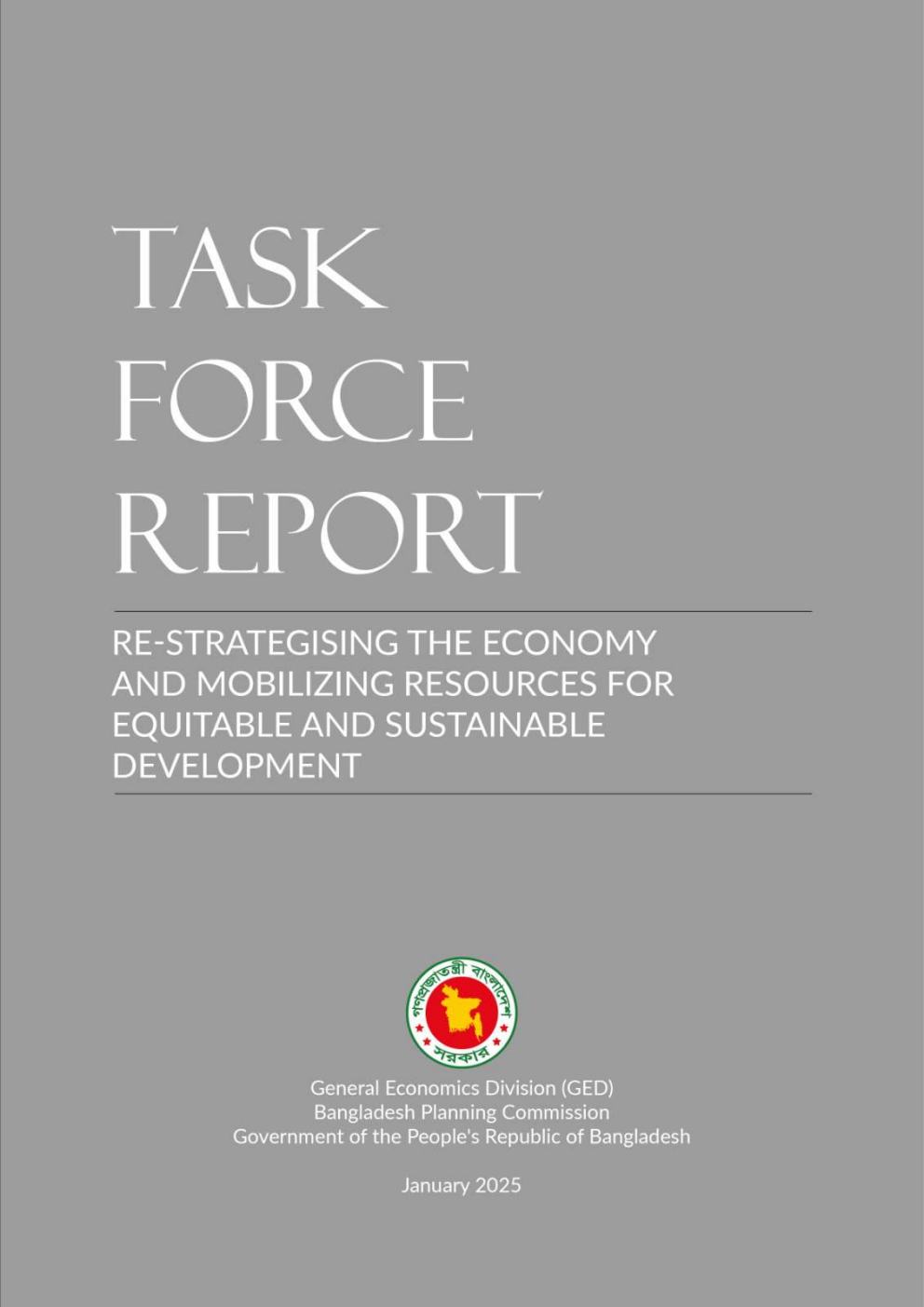
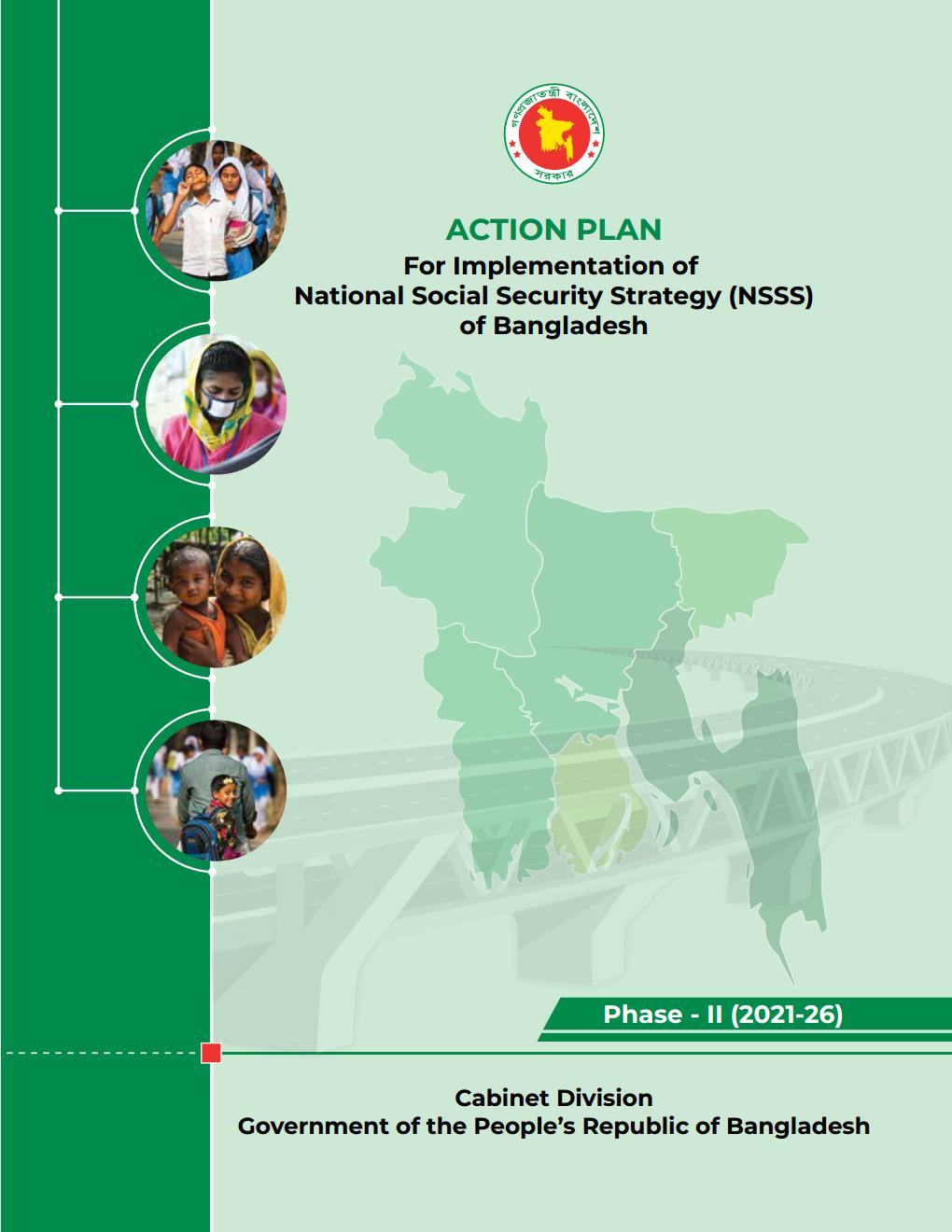
Action Plan For Implementation of National Social Security Strategy (NSSS) of Bangladesh
 January 19, 2023
January 19, 2023 The Action Plan, Phase-2 of National Social Security Strategy (NSSS) has been prepared under the overall guidance and supervision of the NSSS Action Plan Sub-Committee. The Sub-Committee was headed by Mr. Md. Kamal Hossain, as the Secretary, Coordination and Reforms who completed the stakeholder consultation and drafting of the Action Plan. However, after his subsequent transfer to another ministry, Mr. Md. Shamsul Arefin took over as the Secretary and led the finalization process of the action plan and its publication. Mr. Md. Rahat Anwar, Additional Secretary (Coordination) anchored the overall formulating process as the Member Secretary of the sub-committee. Mr. Mohammad Khaled Hasan, Joint Secretary, Civil Registration and Social Security of Cabinet Division supported the committee in designing and drafting of the action plan. The Action Plan was approved and endorsed by an inter-ministerial committee constituted by order of the Hon’ble Prime Minister, titled as Central Management Committee (CMC) on Social Security with Cabinet Secretary as its convenor. The NSSS Action Plan incorporates social security action plans of five thematic clusters and 39 ministries. The focal points, alternative focal points and other relevant officials of the ministries prepared their respective action plans, guided, and assisted by the Cabinet Division through series of workshops. The ministries finalized their parts of action plans in consultation with their stakeholders and with approval of the appropriate authority. The overall technical supports including background research and compilation of the document were provided by the SSPS Programme. Other projects of the Cabinet Division supplied inputs relating to relevant parts of the Action Plan.
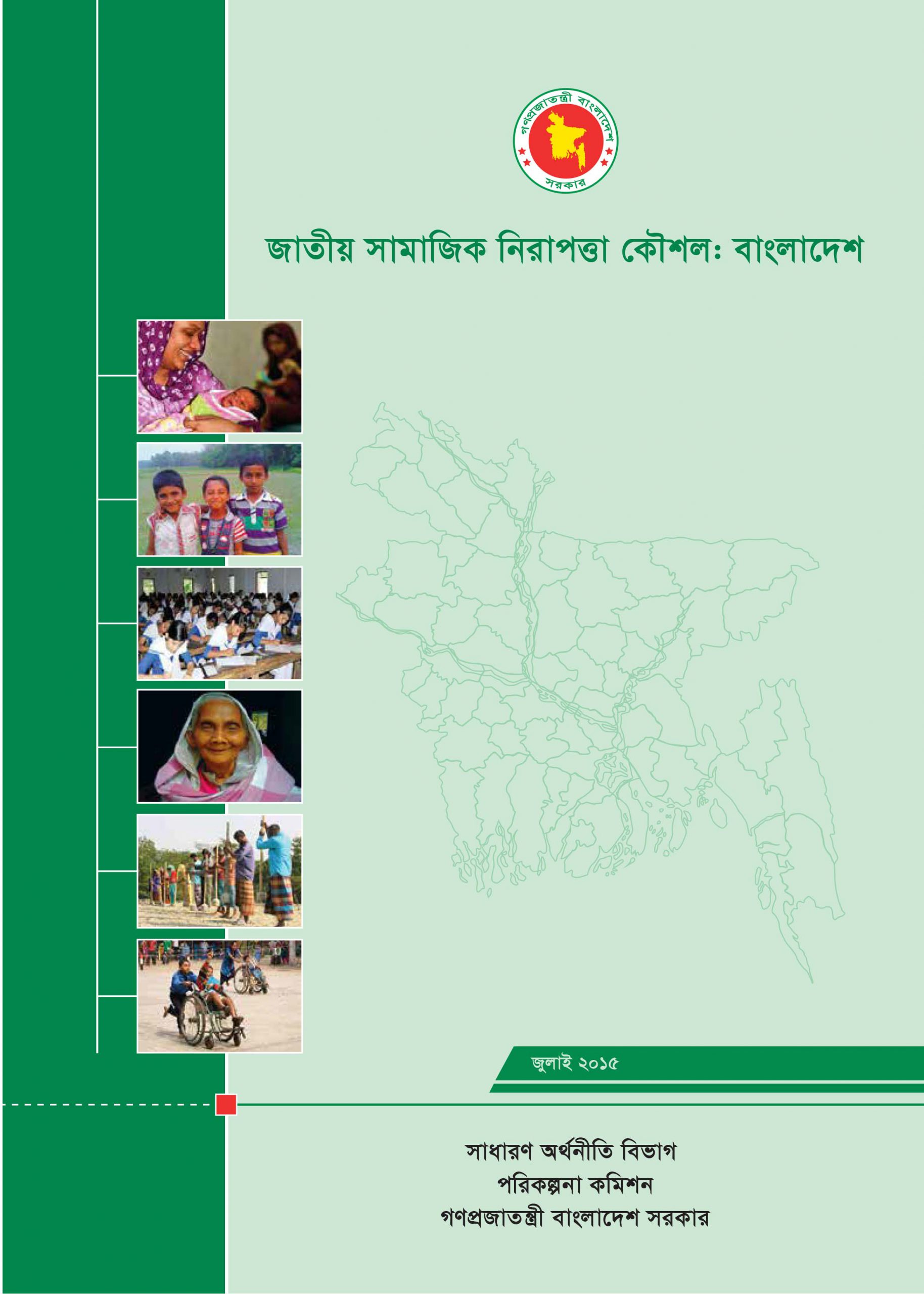
জাতীয় সামাজিক নিরাপত্তা কৌশল: বাংলাদেশ (বাংলা ভার্সন)
 October 26, 2022
October 26, 2022 বাংলাদেশ সরকার দেশের দারিদ্র্য ও বৈষম্য হ্রাসে এবং জনসাধারণের জীবনমানের উন্নয়নে দৃঢ় অঙ্গীকারবদ্ধ। সরকারের এ অঙ্গীকার বিধৃত হয়েছে রূপকল্প ২০২১, প্রেক্ষিত পরিকল্পনা (২০১০-২০২১) এবং ষষ্ঠ পঞ্চবার্ষিক পরিকল্পনা (২০১১-২০১৫) দলিলে। এ প্রতিশ্রæতির অভীষ্ট লক্ষ্য হলো দারিদ্র্য হ্রাসে ইতোমধ্যে অর্জিত অগ্রগতিকে ভিত্তি করে এগিয়ে যাওয়ার পাশাপাশি দারিদ্র্যের প্রকৃত কারণ উদ্ঘাটন ও তার টেকসই সমাধান। পাশাপাশি, দরিদ্র জনগণ যে সকল ঝুঁকিতে রয়েছে তার প্রভাব কমানোর মাধ্যমে এ অগ্রযাত্রাকে দৃঢ়তর ভিত্তির উপর প্রতিষ্ঠিত করাও এর লক্ষ্যভুক্ত। এটি অনস্বীকার্য যে দারিদ্র্য দূরীকরণে সরকারের অতীত সাফল্য প্রশংসনীয় হলেও জনগণের উল্লেখযোগ্য অংশ নানাবিধ কারণে এখনো দারিদ্র্যঝুঁকিতে রয়ে গেছে যাদের মধ্যে দারিদ্র্যসীমার নীচে অবস্থানকারী জনগোষ্ঠী ছাড়াও রয়েছে দারিদ্র্যসীমার কিছুটা উপরে অবস্থানকারী কিন্তু নানা কারণে দারিদ্র্যসীমার নীচে চলে যাওয়ার ঝুঁকিতে থাকা মানুষজন। দেখা গেছে, দরিদ্র ও প্রায়-দরিদ্র মানুষেরা তাদের নিজস্ব সম্পদ দিয়ে এসব ঝুঁকি ও বিপর্যয় মোকাবেলা করতে সক্ষম হয় না। এসব ঝুঁকি মোকাবেলায় দরিদ্র ও ঝুঁকিগ্রস্ত জনগোষ্ঠীকে সহায়তাকল্পে সরকারের বিভিন্ন সামাজিক নিরাপত্তা বেষ্টনী কর্মসূচি চলমান রয়েছে। বাংলাদেশ পরিসংখ্যান ব্যুরো (বিবিএস) পরিচালিত খানা আয়-ব্যয় জরিপে দেখা গেছে, দরিদ্র ও দারিদ্র্যঝুঁকিতে থাকা জনগোষ্ঠীর জন্য গৃহীত এসব কর্মসূচির আওতা ও পরিধি সময়ের সাথে সাথে বেড়েছে। কিন্তু তথ্য-প্রমাণ থেকে এটাও দেখা যায় যে, দরিদ্র জনগোষ্ঠীর উল্লেখযোগ্য অংশ এখনো এসব কর্মসূচির আওতায় আসেনি। তাছাড়া, নিরাপত্তা বেষ্টনী কর্মসূচিসমূহ থেকে প্রাপ্ত গড় সুবিধার পরিমাণ খুবই কম এবং প্রকৃত মূল্যে তা ক্রমান্বয়ে হ্রাস পাচ্ছে। ফলে একটি কার্যকর সামাজিক নিরাপত্তা ব্যবস্থার অধীনে গৃহীত দারিদ্র্য বিমোচন কর্মসূচিতে ব্যয়িত অর্থের যে প্রভাব থাকা উচিত সে তুলনায় এসব কর্মসুচিতে ব্যয়িত অর্থের প্রভাব অনেক কম। সামাজিক নিরাপত্তামূলক কর্মসূচিতে বিরাজমান বিভিন্ন সমস্যাকে বিবেচনায় নিয়ে বাংলাদেশ সরকার একটি সমন্বিত ও ব্যাপকভিত্তিক জাতীয় সামাজিক নিরাপত্তা কৌশল প্রণয়নের উদ্যোগ গ্রহণ করেছে। এ পরিপ্রেক্ষিতে ২০১২ সালের ১০ সেপ্টেম্বর অনুষ্ঠিত মন্ত্রিসভা বৈঠকে পরিকল্পনা কমিশনের সাধারণ অর্থনীতি বিভাগ (জিইডি)-কে জাতীয় সামাজিক নিরাপত্তা কৌশল (এনএসএসএস) প্রণয়নের দায়িত্ব অর্পণ করা হয়। মন্ত্রিপরিষদ সচিবের নেতৃত্বাধীন সামাজিক নিরাপত্তা বেষ্টনী কর্মসূচি বিষয়ক কেন্দ্রীয় ব্যবস্থাপনা কমিটির (সিএমসি) তত্তাবধানে জিইডি এ কৌশল প্রণয়ন করবে বলে সিদ্ধান্ত গৃহীত হয়। কৌশল প্রণয়নের কর্মপরিধি নির্ধারণ ও সার্বিক তত্তাবধানের দায়িত্বও এই কমিটির উপর ন্যস্ত হয়। এ কৌশলের বিষয়বস্তু ও সুপারিশমালা রচনায় সহায়তাকল্পে আঞ্চলিক ও জাতীয় পর্যায়ে উল্লেখযোগ্য সংখ্যক কর্মশালা, আলাপ-আলোচনা ও সংলাপ আয়োজনের ব্যবস্থা গ্রহণ করা হয়। এ পরিপ্রেক্ষিতে বলা যায়, জাতীয় সামাজিক নিরাপত্তা কৌশল হলো বাংলাদেশের রাজনৈতিক, সামাজিক ও অর্থনৈতিক বাস্তবতা বিবেচনায় প্রণীত সম্পূর্ণভাবে একটি দেশজ কৌশল। সামাজিক নিরাপত্তার ক্ষেত্রে বাংলাদেশের সমৃদ্ধ অতীত অভিজ্ঞতার উপর ভিত্তি করে জাতীয় সামাজিক নিরাপত্তা কৌশল প্রণয়ন করা হয়েছে। এ কৌশলের লক্ষ্য হলো বিদ্যমান সামাজিক নিরাপত্তা বেষ্টনী কর্মসূচিগুলির পরিমার্জন ও সংশ্লেষণের মাধ্যমে এগুলিকে আরও নিখুঁত, দক্ষ ও কার্যকর করে তোলা এবং ব্যয়িত অর্থ থেকে সবার্ধিক সুবিধা অর্জন নিশ্চিত করা। এটি সনাতনী ধারণার পরিবর্তে একটি ব্যাপক ও বিস্তৃত পরিধির আধুনিক সামাজিক নিরাপত্তা ব্যবস্থার প্রচলন ঘটাবে। এই নতুন ব্যবস্থায় ২০২১ সালে মধ্যম আয়ের বাংলাদেশের (যখন অতিদরিদ্র মানুষের সংখ্যা হবে ৫ শতাংশের চেয়ে কম) বাস্তবতায় কর্মসংস্থান নীতি ও সামাজিক বিমা ব্যবস্থাকে অন্তর্ভুক্ত করা হয়েছে। আওতা ও পরিধি বিস্তৃত করার মাধ্যমে এবং কর্মসূচির নকশা ও আদলের উন্নয়ন ঘটিয়ে এ কৌশল একদিকে যেমন আয় বৈষম্য কমাতে সহায়তা করবে, তেমনি অন্যদিকে এটি মানব উন্নয়ন প্রক্রিয়াকে শক্তিশালী করার মাধ্যমে উচ্চতর প্রবৃদ্ধি অর্জনে ভূমিকা রাখবে। সামাজিক নিরাপত্তার এই জাতীয় কৌশলে কেবলমাত্র বাংলাদেশের বাস্তবতাই প্রতিফলিত হয়নি, পাশাপাশি এতে প্রাসঙ্গিক আন্তর্জাতিক দৃষ্টান্তলব্ধ জ্ঞান ও ধারণাও অধিগ্রহণ করা হয়েছে। এই কৌশল প্রণয়নের ভিত্তি হিসেবে সংশ্লিষ্ট বিভিন্ন বিষয়ে আন্তর্জাতিক ও দেশীয় বিশেষজ্ঞদের দ্বারা ১০ টি পটভূমিপত্র (ব্যাকগ্রাউন্ড পেপার) রচনার উদ্যোগ গৃহীত হয়।
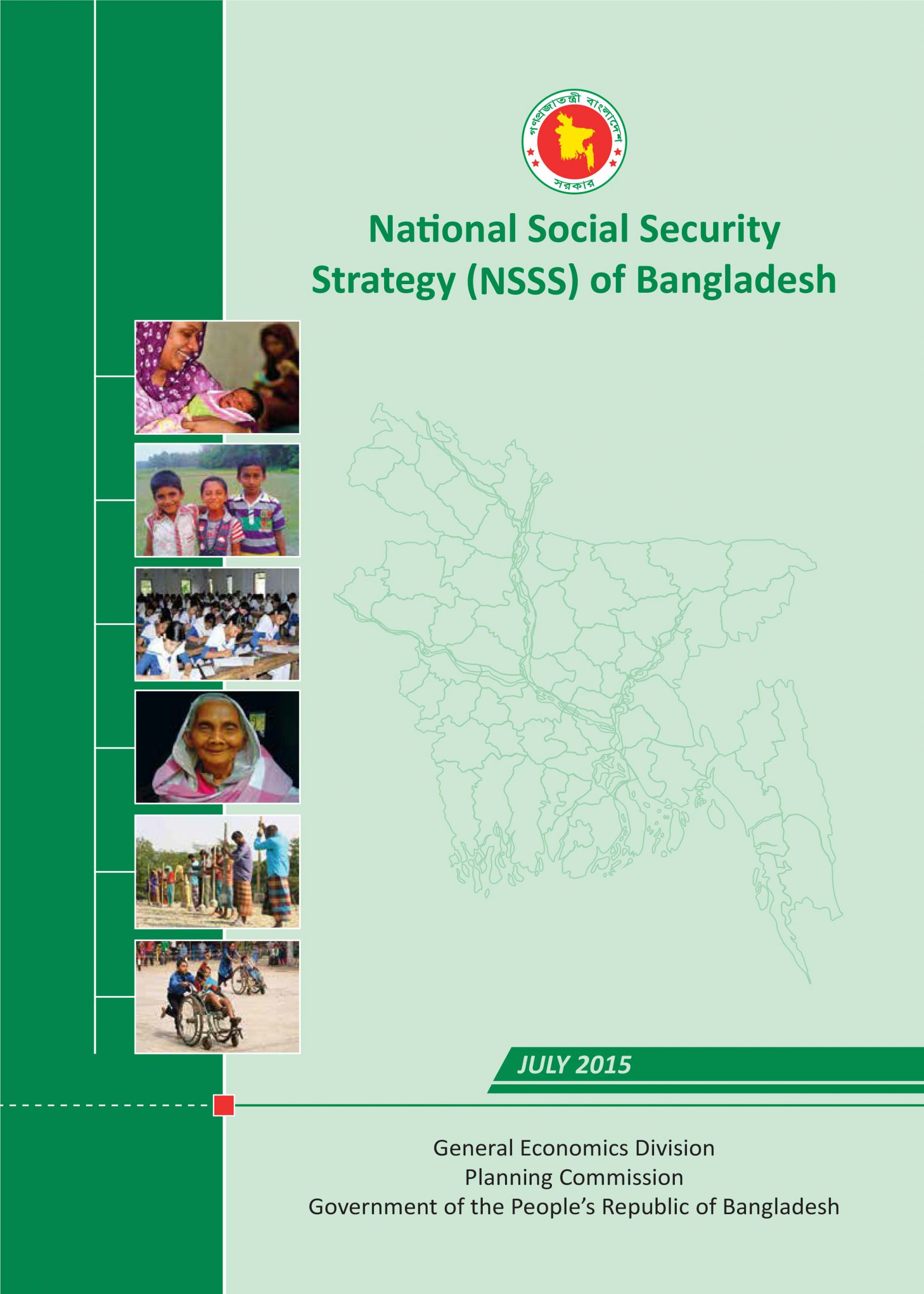
National Social Security Strategy (NSSS) of Bangladesh (English Version)
 October 26, 2022
October 26, 2022 The Government of Bangladesh is strongly committed to reducing poverty, improving human development and reducing inequality. This commitment is reflected in Vision 2021, the Perspective Plan of Bangladesh 2010-2021 and in the Sixth Five Year Plan FY11-FY15. The Government seeks to build on past progress with poverty reduction and further deepen this progress by addressing the root causes of poverty and by lowering the impact of risks faced by the poor and vulnerable population. The Government appreciates that notwithstanding the past impressive progress with poverty reduction, there is a substantial population that remains exposed to poverty owing to various vulnerabilities. These include the population that remains under the poverty line and those that are just above the poverty line but could easily fall below the poverty line because of these vulnerabilities. Evidence shows that the poor and vulnerable group cannot cope with all the downside risks and shocks with their own resources. The present safety net programmes reflect the Government’s response to support the poor and the vulnerable population manage those risks. Household Income and Expenditure Surveys (HIES) show that the coverage of these programmes for the poor and vulnerable households has increased and they have helped lower poverty. But data also suggest that a large proportion of the poor and vulnerable households do not have any access to these programmes. The average benefit of safety net programmes is low. There is considerable leakage of allocated funds and a significant percentage of household beneficiaries are non-poor. Consequently, the impact on poverty reduction from the amount of money spent in these programmes is less than is possible with a better Social Security system. In recognition of these concerns, the Government of Bangladesh has embarked upon the formulation of a comprehensive National Social Security Strategy (NSSS). The Cabinet meeting held on 10th September 2012 entrusted the General Economics Division (GED) of the Planning Commission to prepare the National Social Security Strategy (NSSS) under the guidance of a Central Management Committee (CMC) for the Social Safety Net Programmes Chaired by the Cabinet Secretary. The CMC provided the terms of reference and overall guidance to the formulation of the NSSS. A Framework Paper was prepared by GED, endorsed by the 11-member Sub-committee of CMC led by Cabinet Division and approved by the Ministry of Planning. A strong process of regional and national consultations helped shape the contents and recommendations of the NSSS. In this regard, the NSSS is fully home-grown and based on the political, social and economic realities of Bangladesh. The NSSS builds on the past rich experience of Bangladesh and seeks to streamline and strengthen the existing safety net programmes with a view to achieving better results from money spent. It also broadens the scope of Social Security from the narrow safety net concept to include employment policies and social insurance to address the emerging needs of a middle income Bangladesh in 2021 and ahead. By broadening the scope and coverage and by improving programme design the NSSS will help lower income inequality and contribute to higher growth by strengthening human development. While the NSSS reflects the realities of Bangladesh, to the extent relevant it also draws on good practice international experience. To facilitate the preparation of the NSSS ten background papers, prepared by a team of international and local experts, were commissioned on the various issues relating to the NSSS
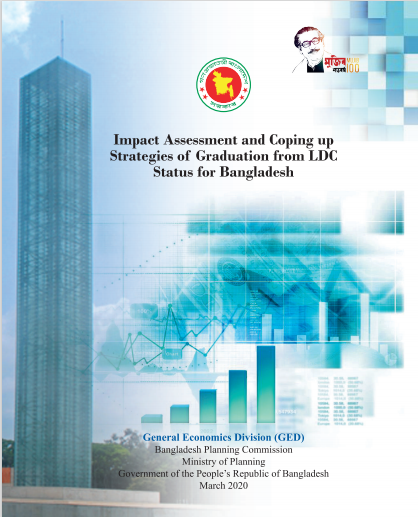
LDC Study Report
 February 18, 2021
February 18, 2021 Since independence, Bangladesh has climbed a long way up the development ladder. The progress measured in terms of income, poverty and human development is truly impressive. Development progress has been particularly rapid since 2009 under the dynamic leadership of Prime Minister Sheikh Hasina, particularly in terms of acceleration of GDP growth. Continuing on its path of growth hike, per capita income has risen to $1909 in FY 2019, which is over 20 times the per capita income at independence. In 2015, Bangladesh crossed the threshold of the World Bank-defined lower middle-income country (LMIC). In 2018 it also crossed the threshold for graduation from the UN-defined list of Least Developed Countries (LDC). The presumptive date for formal graduation out of LDC status is 01 January 2024, after going through the standard process of approval and announcement under the UN system.

National Sustainable Development Strategy (NSDS)
 February 18, 2021
February 18, 2021 The NSDS (2010-21) has identified five Strategic Priority Areas along with three cross-cutting areas with a view to achieving its stated vision and addressing long-term sustainability issue of critical areas. Key objective of the identified Strategic Priority Areas and sustainability of the critical areas which will be facilitated through the NSDS are given in this document.

National Policy Dialogues on Population Dynamics, Demographics Divident, Ageing Population & Capacity Building of GED 2013
 February 18, 2021
February 18, 2021 The objective of this paper is to identify how, in Bangladesh, the current population dynamics are affecting human development particularly in light of the post Millennium Development Goals (MDGs) and the Government of Bangladesh’s Sixth Five Year Plan. This policy dialogue with the key stakeholders will be helpful to identify the depth and dimension, strength and weakness of the past and current policies and program strategies. The dialogue is expected to enable the participants to see the current situation critically, identify the gaps in the existing policies and the problems in the implementation of the program. The paper deals with the relevant theories, policies and implementation status of the programs

MDG Financial Strategy 2011
 February 16, 2021
February 16, 2021 In Bangladesh, it is now recognized that MDGs may not be attained under a business as usual scenario. Additional interventions are needed to push forward the MDG agenda. Accordingly, the MDG Needs Assessment costs are derived for 7 clusters through five Thematic Working Groups (TWGs) under the aegis of the project “Support to Monitoring PRS and MDG in Bangladesh”. In line with convention, the MDG NA estimates are reported for 7 clusters under re-current and capital expenditure types.

GED Policy Study 2018
 February 16, 2021
February 16, 2021 In recent year, policy makers have highlighted the favorable age structure in Bangladesh while formulating medium and long term development plan. The Seventh Five Year Plan postulates that the demographic dividend along with the scope for expanding the participation of female labor force from its present low levels provides Bangladesh with a great opportunity to convert these factors to its advantage by focusing on labor skills. “In general, average labor productivity is low in Bangladesh and investment in skill formation will pay rich dividends in terms of growth acceleration by enhancing labor productivity. Similarly, increasing female participation in labor force will increase growth by expanding the supply of labor. Additionally, serious efforts are needed to upgrade the capacity to deliver technical and vocational education and skills training

Education Sector Strategy and Action for implementing of 7th Five Year Plan (2016-2020)
 February 16, 2021
February 16, 2021 The 7th Plan seeks to push further the ongoing structural transformation in Bangladesh. Accordingly, the manufacturing sector is targeted to achieve double digit growth while organized service sector is expected to further mature. GDP acceleration will be fuelled by increasing investment, rising from 29% in FY2015 to 34% by FY2020, and manufactured exports. Rural economy is projected to continue to undergo transformation as more non-farm activities emerge and the spread of ICT technology fosters knowledge and reduces the transaction costs. These structural changes along with GDP growth acceleration will continue to create more higher- income jobs that will not only be able to absorb the new entrants to the labor force but also reduce the employment share of agriculture. Higher productivity economy wide will contribute to higher real wages.

